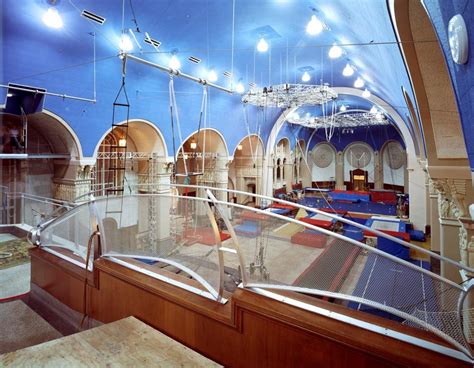Church Construction: The Future of Church Buildings
The landscape of church construction is evolving rapidly, driven by shifting demographics, technological advancements, and a renewed focus on community engagement. Gone are the days of solely focusing on imposing structures; the future of church buildings prioritizes flexibility, sustainability, and a welcoming atmosphere that fosters spiritual growth and community connection. This article delves into the key trends shaping the future of church construction, addressing common questions and exploring innovative approaches.
What are the current trends in church building design?
Current trends in church building design reflect a move away from traditional, large-scale structures towards smaller, more flexible spaces designed for multi-purpose use. This includes:
- Multi-functional Spaces: Designing spaces that can easily transition from Sunday services to community events, classrooms, or even small business incubators maximizes building usage and fosters community engagement. Think adaptable seating arrangements, movable walls, and integrated technology for easy setup changes.
- Sustainability and Green Building: Environmental consciousness is a driving force. Church construction is increasingly incorporating sustainable materials, energy-efficient systems (solar panels, geothermal heating/cooling), and water conservation measures to minimize environmental impact and reduce long-term costs.
- Technology Integration: From live-streaming capabilities and interactive screens to integrated sound systems and digital signage, technology plays a vital role in enhancing the worship experience and facilitating communication. This also allows for remote participation and expands the church's reach.
- Community Focus: The emphasis is shifting from solely religious services to creating spaces that serve the broader community. This includes areas for community gatherings, outreach programs, and even spaces for local businesses to operate.
- Smaller, More Intimate Settings: Larger, less intimate sanctuaries are being replaced with smaller, more flexible spaces that encourage congregation interaction and a sense of community.
What are the challenges of building a new church?
Building a new church presents numerous challenges:
- Funding: Securing sufficient funding is often the biggest hurdle. Creative fundraising strategies, community involvement, and phased construction are becoming increasingly important.
- Land Acquisition: Finding suitable land in desirable locations can be difficult and expensive, particularly in urban areas.
- Regulations and Permits: Navigating the complexities of building codes, zoning regulations, and obtaining necessary permits can be time-consuming and challenging.
- Design and Construction Costs: Material costs, labor shortages, and rising inflation contribute to unpredictable and often escalating costs.
- Community Acceptance: Gaining the support and acceptance of the surrounding community is crucial, especially in densely populated areas.
How much does it cost to build a church?
The cost of building a church varies significantly depending on size, location, design complexity, materials used, and finishes. It's impossible to give a precise figure without specific details, but expect substantial investment. Costs can range from hundreds of thousands to millions of dollars. Thorough budgeting, cost analysis, and value engineering are essential to manage expenses effectively.
What are some innovative design ideas for churches?
Innovative design ideas focus on creating adaptable, sustainable, and community-focused spaces. Examples include:
- Modular Construction: Utilizing prefabricated modules allows for faster construction, cost savings, and greater flexibility in design.
- Adaptive Reuse: Converting existing buildings (e.g., old factories, schools) into church spaces offers cost savings and a unique architectural character.
- Outdoor Worship Spaces: Incorporating outdoor areas for services, gatherings, and community events creates a connection with nature and promotes inclusivity.
- Multi-story Buildings: Utilizing vertical space in urban areas allows for greater density and minimizes land use.
How can churches incorporate sustainable practices into their construction?
Sustainable practices are not just environmentally responsible but also economically advantageous in the long run. Consider:
- Passive Solar Design: Optimizing building orientation and window placement to maximize natural light and reduce heating/cooling needs.
- Energy-Efficient Systems: Utilizing renewable energy sources like solar panels and geothermal energy.
- Water Conservation: Implementing water-efficient fixtures and rainwater harvesting systems.
- Sustainable Materials: Choosing locally sourced, recycled, or rapidly renewable building materials.
- Green Building Certification: Pursuing certifications like LEED (Leadership in Energy and Environmental Design) demonstrates commitment to sustainability.
The future of church buildings is bright, embracing change and adapting to meet the evolving needs of congregations and communities. By prioritizing flexibility, sustainability, and community engagement, churches can create inspiring and impactful spaces that foster spiritual growth and strengthen community bonds for generations to come.

